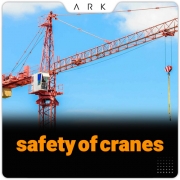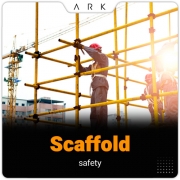Close
Hazards That Threaten People's Lives in the Workplace P1
Did you know that according to the official statistics available in the country, about 10,000 job accidents occur in Iran every year? Unfortunately, about 900 people lose their lives as a result of these accidents in industrial units. The direct and indirect costs of these accidents impose a heavy financial burden on society. Increasing occupational safety and health is one of the most important policies of any country to reduce the damage caused by accidents and occupational diseases to employers and society. How can these staggering costs be avoided? The answer is simple, identify hazards, and follow workplace safety rules. In this article, we are going to introduce the 10 important hazards that people face in their workplaces.

1- Slipping or falling
Falls are one of the most common causes of injury in the workplace. Falls can occur for a variety of reasons in the workplace and even in non-work environments (for example, the causes of falls can be uneven floor surfaces, wet and damp floors, cables left in the workplace, etc). Employers have to pay a lot of money for these accidents every year, while if safety regulations are observed, such accidents in the workplace can be diminished. As you know, the employer is responsible for ensuring the safety of his workers and employees in the workplace.

Accidents have always happened throughout history and will happen in the future, but simple steps can make the work environment safer and prevent many accidents. For example, observing such things as implementing the 5S system, cleaning stains and spilled liquids on the workplace floor, placing equipment in its places, improving lighting, preparing work instructions for height, and require workers to wear non-slip safety shoes can prevent many falls.
2- Electric current
Any electric wires can harm people, whether they are touched directly by people or indirectly transmitted to an individual through an electrical conductor. Voltages above 50 volts are considered dangerous to humans and should be taken seriously. A broken wire cover of motors and electrical devices due to wear or burn can cause a source of danger in the workplace. Unfortunately, some annual accidents that occur due to exposure to electricity in the workplace are fatal. Electric shock can in many cases cause severe and permanent damage. Most of these electric shocks are caused by defective workplace equipment that can be prevented with a proper precautionary measure. Some of the basics of electrical safety include: maintenance of all electrical installations and equipment at appropriate intervals, isolating people by selecting appropriate personal protective equipment, using protective relays, connecting the metal body of the devices to the ground, and replacing damaged power cables. It should be carried in mind that defective electrical appliances can sometimes lead to fires in the workplace.
3- Fire
Businesses that are too weak to maintain workplace regulations are available to the public (for deliberate fires), and businesses that use defective equipment must anticipate the fire. In addition to the damage to buildings, fires can cause damage to people and the reputation of the business (for example, the Tehran Plasco accident, which caused extensive financial and human damage). This is while proper safety measures can prevent such fires from occurring. Installing fire detectors and sensors to reduce detection and extinguishing time can be effective in preventing the spread of the fire. Of course, this equipment needs to be tested periodically and must be connected to an alternative power supply so that it can operate properly in the absence of electricity. It is also necessary to have an emergency response plan in the organization and people are aware of their duties in the case of a fire and proper ways to leave the building.

In order to deal with fire, the presence of appropriate and sufficient numbers of fire extinguishers, in the workplace is very necessary. If people work by the flames, fire-resistant work clothes should be used. Flammable materials must be stored safely, unused electrical equipment must be switched off and unplugged. The preparation of MSDS is essential for people to be aware of the type of chemicals and ways to extinguish it. Fire is an issue that employers and employees have a very important role to play in dealing with.
4- Work in confined places
Enclosed spaces can become dangerous places to work. Tanks, silos, pits, trenches, wells, sewers, drains, pipe ducts, and rooms without ventilation or poor air conditioning can increase the risk of death or serious injury. Welding, painting, flame-cutting, use of chemicals in small spaces, gas leakage in closed spaces can create dangerous working conditions. Poor training can harm not only the workers trapped in these spaces but also the people who are trying to save them. Other things that can happen in such places if you are not careful are lack of oxygen, the release of toxic gas, working with liquids and solids that suddenly fill the enclosed space, etc. Residues from combustion can emit gas, smoke, steam, and dust for a long time. Such materials can cause hot working conditions.

A very clear way to reduce the risk of working in confined spaces is to prevent entering those places primarily. Is it really necessary for people to go to limited space and work there? If it is unavoidable, precautions must be taken. Training and preparing appropriate instructions for entering the confined space can be very effective in reducing these accidents.
5- Mechanical hazards
The term mechanical hazards here refers to a group of hazards that can cause physical harm to individuals. These risks are one of the most common occupational hazards and often occur in most work environments. Unprotected machines, moving parts of machines, cutting and pressing machines, pinch points, nip points, and crushing hazards are among the sources of these hazards. As you work through your daily job, you are likely to face one of these dangers. Employers must ensure the safety of their employees against such risks. Providing training to workers on how to work properly with equipment and how to observe safety principles can be very helpful.
To be continued...

 Military Shoe
Military Shoe
 Safety Shoe
Safety Shoe
 Work Wear
Work Wear
 Office Shoe
Office Shoe
 Hiking Shoe
Hiking Shoe












